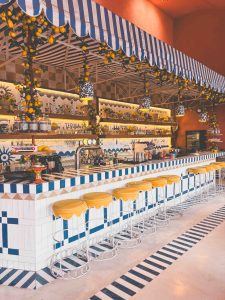Traveling through Europe offers a range of cultural experiences that continue to draw visitors year after year. Each destination brings its own rhythm, shaped by history, art, and the everyday routines that define local life. Moving between cities and regions provides a look at how traditions are preserved while modern influences quietly reshape them. The following sections explore several European destinations that remain meaningful stops for those seeking connection through culture and place.
Practical Connections Across Europe
Moving between European countries has become easier over the years, which allows travelers to see more without rushing. Many travelers plan their European trips around flexible rail travel. Train routes are efficient and scenic, often crossing borders in hours. The Eurail Pass supports this kind of movement, offering access to multiple train networks under a single ticket.
Technology also plays a part in keeping travelers connected. Using an eSIM Europe plan helps manage data access without juggling multiple SIM cards. This makes it easier to handle maps, translations, and bookings while on the move. The combination of rail and digital connectivity suits those who prefer practical independence over guided schedules.
Paris and Its Living Icons
Few places carry the same recognition as Paris. The city’s layout invites people to walk, linger, and observe. The Eiffel Tower remains a defining feature in countless travel photos, surrounded by wide boulevards, quiet parks, and riverside cafes. Away from the tourist paths, smaller neighborhoods reveal the patterns of local life: markets, bookstores, and art studios that maintain their pace regardless of the season. Visiting Paris involves more than sightseeing; it’s a matter of observing how the city’s history continues to influence its modern form.
Greece and Its Islands
The Greek islands hold an enduring appeal. Each island varies in rhythm and landscape, yet all share an attachment to the sea and long-standing traditions. Simple meals, local festivals, and evening gatherings contribute to their cultural tone. Visitors often stay longer than planned because time seems to stretch differently here. The islands work well for slow travel, where a few weeks spent observing the daily life of a single place can be more meaningful than constant movement.
Turkey’s Architectural and Cultural Layering
Istanbul connects Asia and Europe through its layered heritage. The Blue Mosque and Topkapi Palace stand as reminders of empires that once ruled across continents. Their presence within the same city skyline shows how art, religion, and power interacted over centuries. Exploring Istanbul often involves moving between eras within minutes; walking from Ottoman courtyards to modern districts filled with new art spaces and cafes. The city’s constant renewal keeps its history active instead of frozen.
Nature and Reflection in the Alps
The Swiss Alps remain among the best places to visit in Europe for those drawn to quiet scenery. The Lauterbrunnen Valley lies between steep cliffs, where waterfalls drop from great heights. Close by, mountain lakes mirror snow-covered peaks, and the village paths stay open to hikers through much of the year. Nearby, Neuschwanstein Castle in Germany shows another side of Alpine culture; architectural imagination inspired by stories and legends. These areas invite a slower rhythm, where pauses between destinations matter as much as the arrival itself.
Italy’s Lakes and the Art of Leisure
Northern Italy continues to attract those who value calm settings with cultural depth. Lake Como sits among hills and traditional towns that have shaped local art and architecture for centuries. The mix of mountain air and reflective water gives the place a quiet dignity. Beyond its scenery, the nearby wine regions keep traditions of production that link generations. Time here often centers on shared meals, calm evenings, and steady conversation rather than sightseeing.

Northern Europe’s Light and Silence
In the far north, long nights and bright summers frame a different sense of space. Watching the Northern Lights in Iceland or Finland remains one of the most striking experiences in any European destination. Natural phenomena replace urban design as the focus. Hot springs like the Blue Lagoon draw visitors seeking warmth against the cold. The simplicity of these northern experiences offers balance to the dense cultural activity of the southern regions.
Exploring Culture Through Movement
Some travelers choose river cruises to link destinations along waterways like the Danube or Rhine. Others join a multi-country tour to see Europe’s contrasts within a limited schedule. Each method shapes the kind of experience that follows. Train travel remains a constant thread, especially across shorter journey times where efficiency meets scenery. Cultural exposure often happens between places: on a platform, in a dining car, or while watching new towns appear through the window.
Exploring Europe continues to be about rhythm and variation rather than scale. From the architectural icons of Paris and Istanbul to the quiet landscapes of the Alps and northern lights of Scandinavia, each region maintains a cultural tone shaped by daily living. The diversity of travel spots across the continent supports different kinds of travelers: those seeking art, history, food and wine, or silence. What connects these places is their ability to make movement meaningful, turning each trip into an ongoing conversation between traveler and place.







